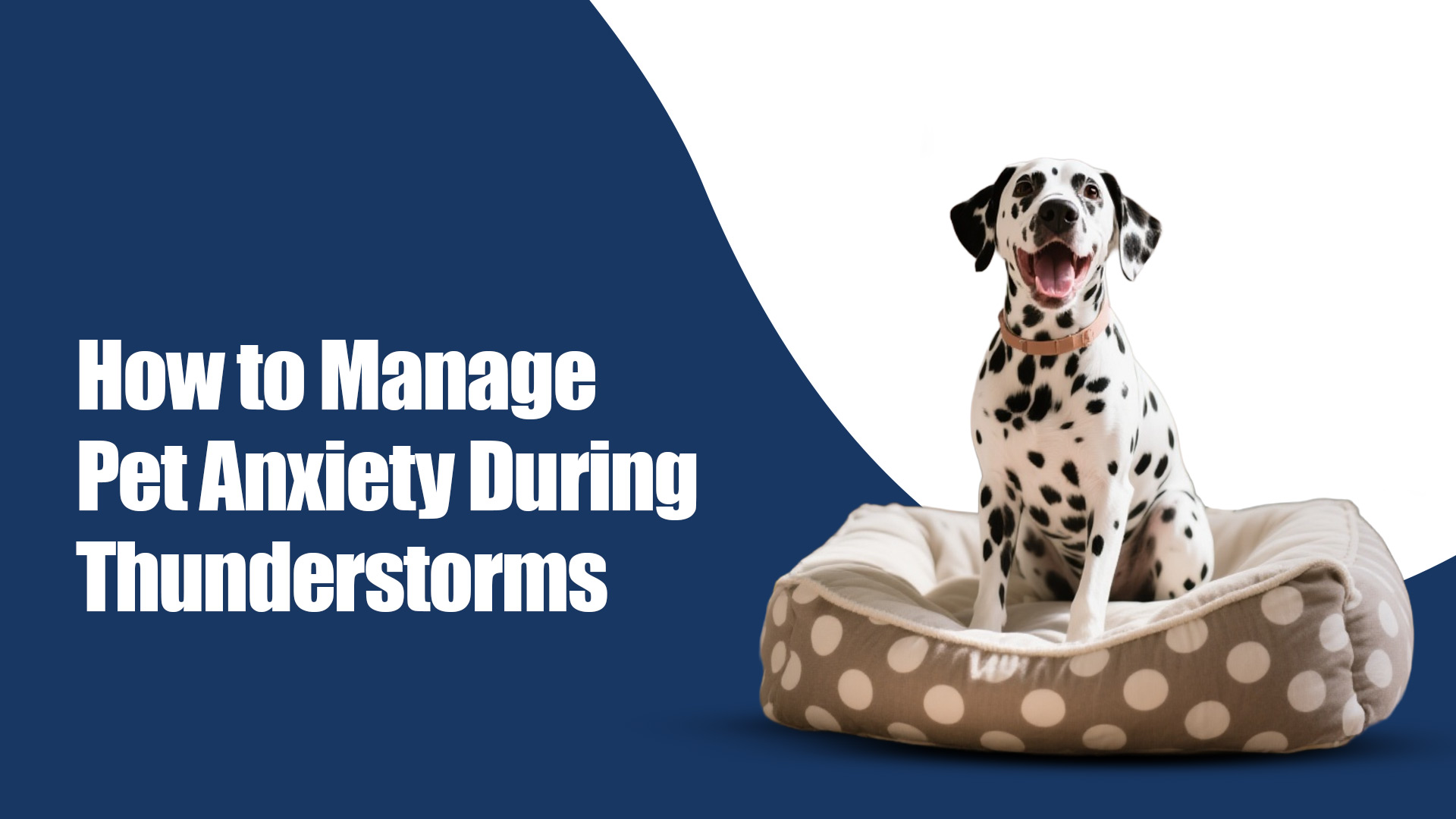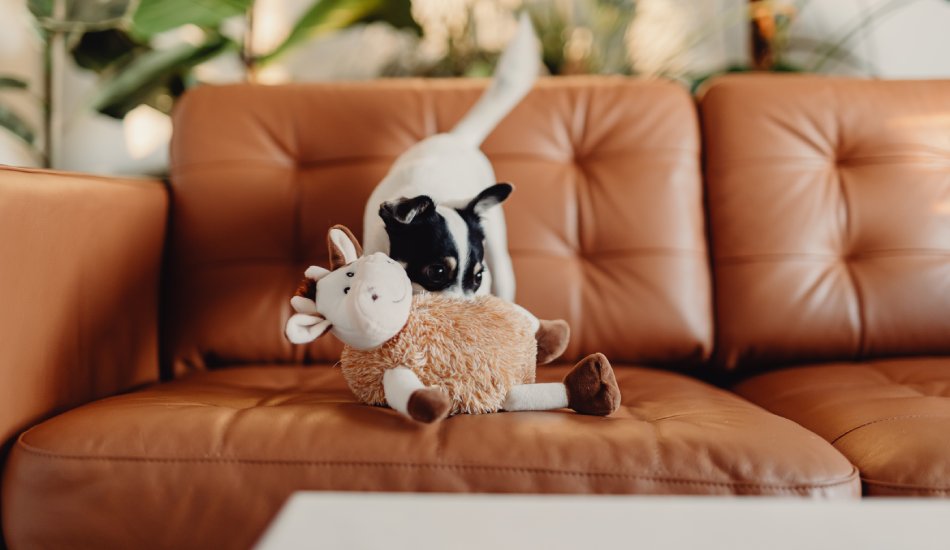7 Common Dog Behavior Problems and How to Fix Them

Bringing a dog into your life is a heartwarming experience but it also comes with its share of challenges. From excessive barking to unexpected aggression, dog behavior problems can be confusing, frustrating, and sometimes even overwhelming for pet parents. Whether you’re a new dog owner or have years of experience, encountering behavioral issues is not uncommon. In fact, aggressive behaviour in dogs, separation anxiety, and leash pulling are some of the most frequently reported concerns by dog owners worldwide.
Understanding why your dog behaves the way they do is the first step toward building a more harmonious and happy relationship. Dog behavioral issues rarely stem from disobedience; they're often a result of unmet needs, lack of training, or anxiety.
In this blog, we’ll walk you through the 7 most common dog behavior problems from dog aggression to house soiling and show you practical, positive ways to fix them.
Why Dog Behavior Problems Are Common Among Pet Owners
Dog behavioral issues are more common than you might think. Many pet parents struggle with behaviors like leash pulling, house soiling, and dogs aggression. These issues often stem from lack of training, socialization gaps, or even underlying medical problems. Recognizing that you're not alone in facing these challenges is the first step toward finding effective solutions.
The Importance of Addressing Behavior Problems Early
Behavioral problems in dogs don’t just go away on their own. In fact, when ignored, they can escalate into more serious issues like aggression or anxiety. Early intervention helps ensure a happier, healthier relationship between you and your dog, while also preventing long-term habits that are harder to break.
7 Common Dog Behavior Problems and How to Fix Them
1. Excessive Barking: A Common Communication Issue
Barking is a dog’s natural way to communicate. But excessive barking can become a nuisance.
Why it happens: Boredom, anxiety, attention-seeking, or reacting to stimuli like strangers or other dogs.
How to fix it:
- Identify triggers and reduce exposure.
- Teach the “quiet” command.
- Use interactive toys or puzzles to keep your dog engaged.
2. Aggression Towards People or Other Dogs
Dogs aggression is one of the most concerning dog behavioral issues. It includes growling, snapping, biting, or lunging.
Why it happens: Fear, territorial instincts, lack of socialization, or past trauma.
How to fix it:
- Consult a certified dog behaviorist or trainer.
- Use positive reinforcement to encourage calm behavior.
- Avoid punishment it can worsen aggressive behaviour in dogs.
- Rule out medical issues with a vet check-up.
3. Separation Anxiety: Destructive Behavior When Left Alone
Dogs with separation anxiety often bark, howl, chew, or soil the house when left alone.
Why it happens: Over-dependence on the owner, sudden changes in routine, or lack of independence training.
How to fix it:
- Gradually train your dog to be alone using short absences.
- Leave them with interactive toys or treats.
- Create a calm departure and arrival routine.
- In severe cases, consult a vet for behavioral therapy or medication.
4. Destructive Chewing: A Problem That Requires Immediate Attention
Chewing is natural but when it targets your shoes, furniture, or cords, it’s a problem.
Why it happens: Teething (in puppies), boredom, stress, or lack of proper chew toys.
How to fix it:
- Provide appropriate chew toys.
- Use deterrent sprays on furniture.
- Exercise your dog regularly to reduce excess energy.
- Correct the behavior immediately with redirection, not punishment.
5. Jumping on People: A Social Behavior That Needs to Be Corrected
While often well-intentioned, jumping can be overwhelming or dangerous, especially for children or elderly people.
Why it happens: Excitement, attention-seeking, or lack of boundaries.
How to fix it:
- Ignore your dog when they jump; reward calm greetings instead.
- Ask guests to turn away or avoid eye contact until the dog sits.
- Use basic obedience commands like “sit” or “stay.”
6. Pulling on the Leash: An Issue for Walks and Outings
A dog that pulls on the leash can turn a pleasant walk into a struggle.
Why it happens: Excitement, lack of leash training, or desire to explore.
How to fix it:
- Use a no-pull harness or head halter.
- Stop walking when they pull and only move forward when the leash is loose.
- Reinforce loose-leash walking with treats and praise.
7. House Soiling: Problems with Potty Training
House soiling is frustrating for pet parents and can stem from a variety of causes.
Why it happens: Incomplete potty training, stress, medical issues, or marking behavior.
How to fix it:
- Stick to a consistent potty schedule.
- Reward outdoor potty behavior.
- Clean accidents thoroughly to eliminate odor markers.
- Visit a vet to rule out health problems.
Factors to Consider When Addressing Dog Behavior Problems
Dog’s Age and Health: Tailoring Solutions to Your Dog’s Needs
Older dogs may act out due to cognitive decline or pain, while puppies need time to learn boundaries. Always consider your dog’s physical and mental health when addressing behavior.
Consistency in Training: The Key to Success
Mixed signals can confuse your dog. Ensure everyone in the household follows the same rules and commands to reinforce training.
Positive Reinforcement: How Rewarding Good Behavior Works
This approach focuses on rewarding desired behaviors (with treats, praise, or play), encouraging your dog to repeat them.
Socialization: Ensuring a Well-Adjusted and Friendly Dog
Expose your dog to various people, animals, and environments early on to prevent fear-based behaviors and dog aggression later in life.
Pros and Cons of Different Approaches to Fixing Behavior Problems
Pros: Why Positive Reinforcement Works
- Builds trust and strengthens your bond
- Encourages voluntary cooperation
- Reduces fear and anxiety
Cons: Potential Drawbacks of Negative Reinforcement
- Can increase aggression or fear
- Damages the dog-owner relationship
- Often ineffective in the long term
How to Train and Correct Behavior Problems Effectively
Step 1: Identify the Root Cause of the Behavior
Is the problem behavioral or medical? Is it situational or persistent? Understanding the “why” is key.
Step 2: Implement the Correct Training Techniques
Use targeted training methods based on the behavior. For example:
- Desensitization for anxiety
- Counter-conditioning for aggression
- Obedience commands for jumping
Step 3: Be Patient and Consistent with Training
Behavioral change takes time. Celebrate small victories and maintain consistency in cues, timing, and rewards.
Conclusion
Dog behavioral issues can be challenging but they’re not a life sentence. With patience, the right training techniques, and early intervention, even the most persistent dog behavior problems can be corrected. Whether it’s aggressive behaviour in dogs, excessive barking, or house soiling, understanding the cause and applying consistent, positive solutions is the key to long-term success.
At Zigly, we understand that every dog is unique and so are their behavioral needs. That’s why we offer a wide array of professional advice on dog aggression to curated toys and calming solutions for anxiety. Zigly is here to help you raise a well-adjusted, happy companion.
Your dog deserves the best care. With Zigly by your side, you’re never alone in your pet parenting journey.
FAQs About Dog Behavior Problems and Solutions
What is the best way to stop my dog from barking excessively?
Use positive reinforcement, teach the “quiet” command, and reduce exposure to triggers. Make sure your dog is getting enough mental and physical stimulation.
How can I stop my dog from being aggressive towards other dogs?
Work with a professional trainer or behaviorist, focus on gradual socialization, and avoid punishment-based techniques that could worsen the aggression.
What should I do if my dog has separation anxiety?
Create a predictable routine, gradually increase alone time, and offer enrichment when you’re away. In severe cases, consult a vet or canine behavior expert.
How can I prevent my dog from chewing on furniture?
Provide designated chew toys, exercise your dog regularly, and use deterrents on furniture. Supervise and redirect the behavior as needed.
Why does my dog pull on the leash and how can I stop it?
Teach loose-leash walking, use a harness or head halter, and stop walking when your dog pulls. Reward them when the leash is slack.
How do I handle house soiling with my dog?
Maintain a consistent schedule, reward correct potty behavior, clean up accidents thoroughly, and consult a vet if the issue persists.

















The information below is required for social login
Create New Account